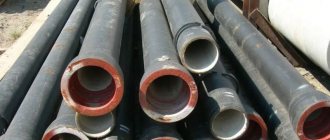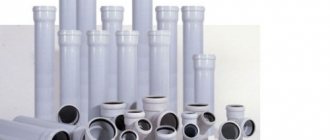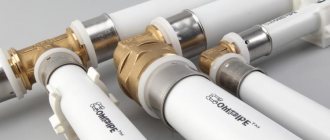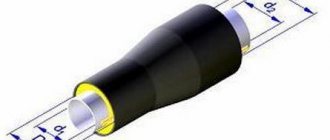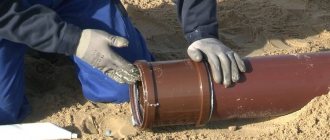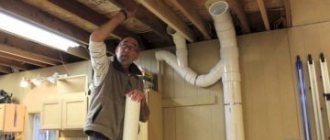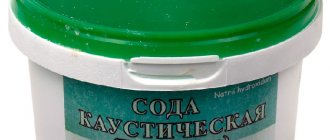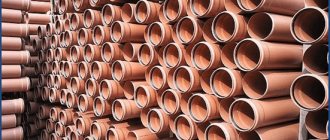Types of pipes for external sewerage
Pipes for external sewerage are divided into two types: cast iron and plastic.
Cast iron materials have been used for decades. Their service life is estimated at an average of 80 years. The positive factors of cast iron products include their durability and high degree of strength. But one cannot fail to note the shortcomings. Cast iron products are quite heavy, which makes installation work difficult. Also, the surface of cast iron has roughness, which to some extent prevents the passage of water flows and allows elements to build up. As a result, the sewer becomes clogged. And most importantly, this type of pipes has a high price.
Not so long ago, plastic pipes appeared on sale, which turned out to be a good replacement for cast iron. They, in turn, are divided into the following types:
- PVC pipes have a number of characteristics, such as the ability to use them at low temperatures and a high degree of mechanical and chemical stress. But they are afraid of high temperatures. For example, the maximum temperature that the material can withstand is 4000C. They have different strength indicators, depending on which their scope is determined:
- Light level of strength, for arranging sewer pipelines that are installed at shallow depths without exerting any pressure on them.
- With medium strength, PVC pipes can be laid across small roads.
- Heavy PVC pipes are used in industry and can be laid under highways.
- Polypropylene materials. This type of material is not used for arranging external sewage systems. It is better to use them in conditions where placement in the ground is not required. Usually this is the arrangement of internal sewerage. This is due to the fact that this material differs from PVC in less rigidity, and most importantly, the possibility of damage by rodents. But it is resistant to high temperatures up to 8000C.
- Polyethylene corrugation. This is one of the most common types of pipes for external sewerage. Their diameter section varies from 200 mm to 800 mm. This is a fairly durable material, it can be laid to a depth of up to 15 m. It consists of two layers: an outer corrugated one, which is made of thick polyethylene, and a smooth inner one, which has a smaller thickness.
Advantages
Plastic pipes can be used both for external and hidden installation, as they look aesthetically pleasing and are not conspicuous. There is no need to paint them, and the audibility of flow movements in plastic is much lower than in metal.
Plastic will last a long time. Even at low temperatures it is resistant to impacts and high soil pressure. The smooth surface of the pipe helps sewage drain faster and more efficiently, allowing it to withstand high water pressure. It also reduces the risk of blockages and damage even when moving dense elements. The low roughness coefficient prevents deposits of limestone and other decay elements, which provides greater strength.
This material is resistant to corrosion, changes in wastewater temperature and melting processes, salts, lime deposits, mineral acids and alkalis. In a private home you will have to deal with this yourself, and this is energy-consuming.
Low weight facilitates the transportation process. It is not necessary to order a car for delivery. Installation will not take much time; installation for a private home can be done independently, since the process is simple and does not require special knowledge.
Advantages of plastic pipe
Plastic products have a number of undeniable advantages. These include:
- Corrosion resistance. Made from materials that do not react with destructive elements. The service life of plastic is less than that of cast iron, but still reaches 50 years.
- During operation, plastic pipes do not create much noise, since the smooth inner surface ensures the unhindered passage of water.
- The environmental friendliness of the material ensures safe use in domestic conditions.
- Low degree of thermal conductivity. This is a significant plus, since the hot water passing through the pipes does not cool down.
- Plastic is highly resistant to temperature changes and pressure changes.
- They are lightweight, which greatly simplifies the installation process. No welding is required to connect them. They are connected using special parts. The connections are ultimately reliable and sealed.
- Plastic products do not require maintenance in terms of corrosion protection. There is no need to paint them. Suitable for both open and indoor use.
Material
Sewer pipes and fittings are made by hot extrusion from polypropylene, a copolymer obtained by polymerization of propylene and ethylene. The estimated service life of sewer pipelines is more than 50 years.
Basic mechanical and thermal characteristics at 20°C
| Name | Methodology | Unit measurements | Meaning |
| Density | GOST 15139-69 | g/cm³ | >0,91 |
| Linear expansion coefficient | GOST 15173-70 | 1,5×10´ | |
| Tensile yield strength | GOST 11262-80 | MPa | 25—28 |
| Tensile strength | GOST15173-80 | MPa | 28—35 |
| Elongation at break | GOST/1262-80 | % | >100 |
| Thermal conductivity | GOST23630-79 | W/m °C | 0,26 |
Selection of wall thickness
One of the important parameters for the reliable functioning of sewer pipes is their thickness. As water passes through the drain, it exerts internal pressure on the walls. Therefore, the thickness must be such that the walls can withstand the pressure exerted on them. But it should be noted that when draining the sewer, the water flows by gravity, there is no great pressure on the walls, and therefore a significant thickness is not required.
Basically, the wall thickness of external sewer pipes is determined by their diameter. Traditionally, the thickness of pipes with a diameter of 110 mm is 3 mm. If the diametrical cross-section is 150 - 160 mm, then their thickness is about 3.9 mm. This thickness is functionally of great practical importance. For example, if a meter of 3 mm steel pipe with a diameter of 110 mm weighs 1 kg, then a 3.9 mm thick one with a diameter of 160 mm will already weigh about 2 kg.
As for plastic materials, the dependence of the parameters of thickness and diameter remains the same. The manufacturing process of PVC pipes is not complicated and, if necessary, you can change the thickness of the pipes during production.
How to choose?
When selecting the optimal size of PVC sewer pipes, the main parameter is calculated - the expected volume of wastewater that passes through the pipeline.
In a private household, the amount of liquid drained depends on the number of people living. The more drainage points there are in the house, the wider the receiving drain pipe.
External sewerage cannot be less than 11 cm in diameter. For internal wiring in an apartment, it is enough to choose sewer pipes of small diameter up to 7.5 cm.
When discharging wastewater into a riser, the size of the circle should not be less than the diameter of the common line. For buildings with five floors and below, this figure is 11 cm; if there are more floors, then the diameter reaches 16–20 cm.
Use common sense to select the optimal size of pipes at various drain points.
You should not install a bulky sewer network with high throughput in low-rise buildings and apartments. Efficiency will increase slightly, but the cost and location area will increase significantly.
Corrugated pipes
Sewage pipes are selected according to the following criteria:
- by diameter;
- by wall thickness;
- along the length of the free end.
Technical characteristics of 110 mm pipe
The main components of the diametrical section are as follows:
- Internal diametrical section. This parameter is fundamental. It is according to this that all connecting elements are selected. For sewer plastic pipes 110 mm, the internal diameter is 103.6 mm.
- The nominal diameter determines the nominal value of the internal diametral section.
- Outer diameter section.
- Pipe wall thickness.
One of the main parameters is the diametrical cross-section. It is by these indicators that the scope of application of plastic products is determined. Pipes with a diameter of 110 mm are mainly used for the construction of sewage drains.
The table below will help you decide on the choice of a pipe with a diameter of 110 mm and its technical characteristics.
Recommended sizes
In the table below, you can see the recommended diameters of plastic pipes for internal or external sewerage. All data provided are advisory in nature and may change up or down, depending on the technical characteristics of plumbing fixtures or the sewer system.
Recommended dimensions for internal sewerage
| Plumbing fixture | Inner diameter (mm) |
| Toilet | 110 |
| Bath, shower, sink | 40 — 50 |
| Sink, bidet | 40 — 50 |
| Washing machine and dishwasher | 25 |
| Combined drain | 50 |
| Sewer distribution | 50 |
| Riser | 110 |
| Bends | 65 — 75 |
How to install a 110 mm pipe
The laying of sewer pipes is determined according to a certain technology. Compliance with it ensures high-quality functioning of the sewerage system. During installation, certain features should be observed and certain nuances taken into account.
Slope of the sewer system
One of the most important parameters is the slope of sewer pipes. The drainage water should flow away easily and without any obstruction. The natural process of drainage requires the construction of some slope. According to the standard, the slope is 1 cm per 1 m of pipe. To arrange the slope, markings are first made, and then fasteners are installed in accordance with the markings. The marking is done using a level, preferably a laser. First, mark a horizontal line that runs level with the drain hole on the riser. Then it rises by a number that corresponds to the distance from the riser to the original drain point.
Connection process
An important and directly main factor in the quality arrangement of a sewer system is pipe connections. The process itself is simple, but there are some nuances that ensure the reliability and tightness of the joints. Negligence in this matter can lead to the following negative factors:
- leaks;
- unpleasant smell.
In order to prevent the defects listed above when connecting 110 mm pipes, sealing gaskets are used, which are available in several types: single-feather, double-feather and double-feather with a plastic ring. The installation of these gaskets is carried out with some differences, which should also be taken into account. For example, single-feather gaskets are usually installed, but when installing others, it is necessary to use a special lubricant. So, in order to correctly connect 110 mm sewer pipes:
- Insert the gasket into the socket. We make sure that distortions do not form. Also, you should first inspect the gasket so that it does not have any defects.
- As a lubricant, you can use available products: detergent, soap, Vaseline. The main thing is that these products do not negatively affect rubber gaskets and do not change their structure. It is difficult to predict this, so experts recommend using a specialized lubricant that is made on a silicone basis. Silicone itself cannot be used, as it is aggressive to rubber.
- After the seals are installed, all that remains is to connect the products together. During the work, we make sure that the joints are tight.
Sequence of connections
Let us clarify that 100 mm pipes are connected not only to each other. In arranging a sewer system, various fittings are used that allow turning or other bending if necessary. Here is an example of the sequence of connections of the sewer system:
- The drainage system begins with a turntable fitting, to which a flexible corrugated hose is connected on the inside, and a 110 mm pipe on the outside. Many people don't use this element. Then in this case the tightness of this connection cannot be guaranteed.
- Don’t forget, when connecting the product to the fitting, a rubber gasket must be installed. We also monitor the planting depth.
- If it is necessary to arrange a branching sewer system, tee fittings are used. To change the diametrical cross-section in the sewer system, adapter fittings should be purchased.
- The last rule in the connection. All joints must be placed along the flow of water.
Table of water pipe diameters
Pipes are qualified according to their external size, which is specified by the manufacturer. To determine the internal diameter, you will need to subtract twice the wall thickness from the external value. However, products made of cast iron and steel are marked by internal diameter, taking into account their throughput. This should be remembered when using products made from different materials in the same system. Let's look at a few examples.
Steel pipe 76x3 means:
- outer diameter of the product 76 mm;
- wall thickness 3 mm;
- the internal passage will be 70 mm.
The calculation was as follows: 76 - (3x2) = 70 mm.
2 example. 1" copper pipe implies an outer thickness of 1 inch, or 25.4 mm.
Fittings are used to join products made of different materials. To connect a metal and plastic pipe, the fittings will have plastic on one side, which will allow for high-quality soldering, and on the other, threads for a reliable threaded connection
To do this, you need to pay attention to the thread size and pitch. When connecting to cast iron, sockets and special seals are used
Plastic can be soldered together, metal can be welded using electric or gas welding.
Steel
Table of sizes of steel pipes
When installed with steel products, their selection is made according to the outer diameter of the pipe of the water supply system. According to the requirements of GOST 10704–91, they are divided into groups:
- large diameter - from 508 mm;
- medium – 114-530 mm;
- small – up to 114 mm.
In home plumbing, the most popular products are those with small sizes. Medium - in the city water supply. Large - for main oil and gas pipelines. The most popular products include:
- ½” - 12.7 mm;
- ¾” - 19.0 mm;
- 1” - 25.4 mm;
- 1½” - 38.1 mm.
Specialists who are involved in laying and repairing water pipes on a daily basis know these values by heart, while others look them up in tables.
Cast iron
Cast Iron Pipe Size Chart
These products are used when laying street water supply networks. Their use indoors is limited. They have long-lasting operation and increased strength. However, they are fragile and are susceptible to impact. Disadvantages include significant weight and high cost. The size of the pipe for such a water supply system is calculated according to the internal throughput of the product.
Plastic
Modern technologies make it possible to produce high-quality plastic that is sufficiently durable, lightweight, does not corrode, and is an environmentally friendly material. Thanks to these characteristics, it displaces metal and cast iron from the construction market; its cost is significantly lower than these materials. The most popular materials are:
Plastic pipe size chart
- polyethylene - is the cheapest option, used for technical water supply in utility rooms;
- polypropylene - requires special equipment for soldering, well suited for cold water supply in the house;
- metal-plastic - one of the highest quality in this segment, used in cold and hot water supply indoors.
The size of these products leaves much to be desired. The problem is that each manufacturer sets its own sizing chart. Therefore, when assembling a plastic water supply system, it is advisable to purchase all components from one manufacturer. Or you will have to take measurements of each product. Despite this, plastic pipelines are distinguished by their performance characteristics and are very popular, especially when laying water distribution indoors.
Rules for working with plastic pipes
Despite the apparent simplicity of assembling a sewer system made of plastic materials, there are some nuances that should be taken into account when working. First of all, prepare the tools:
- Hacksaw or pipe cutter.
- Bulgarian.
- Sandpaper for cleaning.
- Lubricant and glue for plastic pipes.
Rules for processing plastic pipes in case of cutting them:
- After cutting the pipe into two parts, it is necessary to ensure that there is a chamfer on the cut for ease of connection.
- The sections are lightly processed with a grinder and cleaned with sandpaper.
- After this, the elements are cleaned of dust, and the ends are treated with a degreaser.
- After the rubber gaskets are installed, apply a thin layer of glue to the end and insert it tightly into the fitting. For reliability when connecting, the elements can be turned a quarter turn.
When installing a sewer drain, it is necessary to carry out the work in such a way as not to return to this procedure for at least ten years. And this is quite possible if you adhere to all the tips and rules given above. Proper pipe laying is the key to the long-term functioning of the sewer system.
Manufacturing technology
Polyethylene sewer pipes for domestic sewage are made by extrusion. Polyethylene, melted to a semi-liquid state, is forced through a specially shaped hole, resulting in a workpiece of a size approximately close to the specified one. After this, it is calibrated in a vacuum chamber, where the product receives a standard size.
The final stage of the manufacturing process is cutting into individual fragments (from 2000 to 8000 mm) and marking. After this, the finished products undergo inspection. The criteria for assessing quality are the following indicators:
- condition of external and internal walls;
- tensile strength;
- change in linear dimensions with increasing temperature;
- resistance to internal pressure.
Among all the materials from which a sewer pipe can be made, polyethylene has the most successfully selected parameters. There are several grades of material that can demonstrate high performance qualities. The following raw materials are used:
- low density polyethylene (LDPE);
- — high density (HDPE);
- - ultra-high density (stitched).
These varieties allow the production of products with different capabilities. It can be used in sewerage, heating or plumbing systems. Unlike vinyl analogues, PE pipes are not brittle when the temperature drops. When used in external lines they can withstand limited mechanical loads. For industrial sewerage systems, this is one of the most successful and practical options. In addition, PE pipe for sewerage is used in reclamation systems, drainage, ventilation lines and other areas far from its main purpose.
Also read:
Pumping out sewerage in a private house - how to pump out
SNiP - sewerage, external networks and structures
Criterias of choice
To choose the right material for sewer installation, you must consider the following parameters:
- temperature regime of the region - the stronger the frost, the more stable the material should be;
- depth of laying in the ground and degree of soil mobility, as well as the presence of vibrations;
- pressure or non-pressure sewerage - pressure sewer requires material with thicker walls;
- internal or external system;
- Is sound insulation necessary - cast iron reduces sound waves well, plastic does not remove them.
One of the selection criteria is price, but saving on installation or connecting elements is not recommended. Poor quality parts may reduce service life or lead to repair costs.
